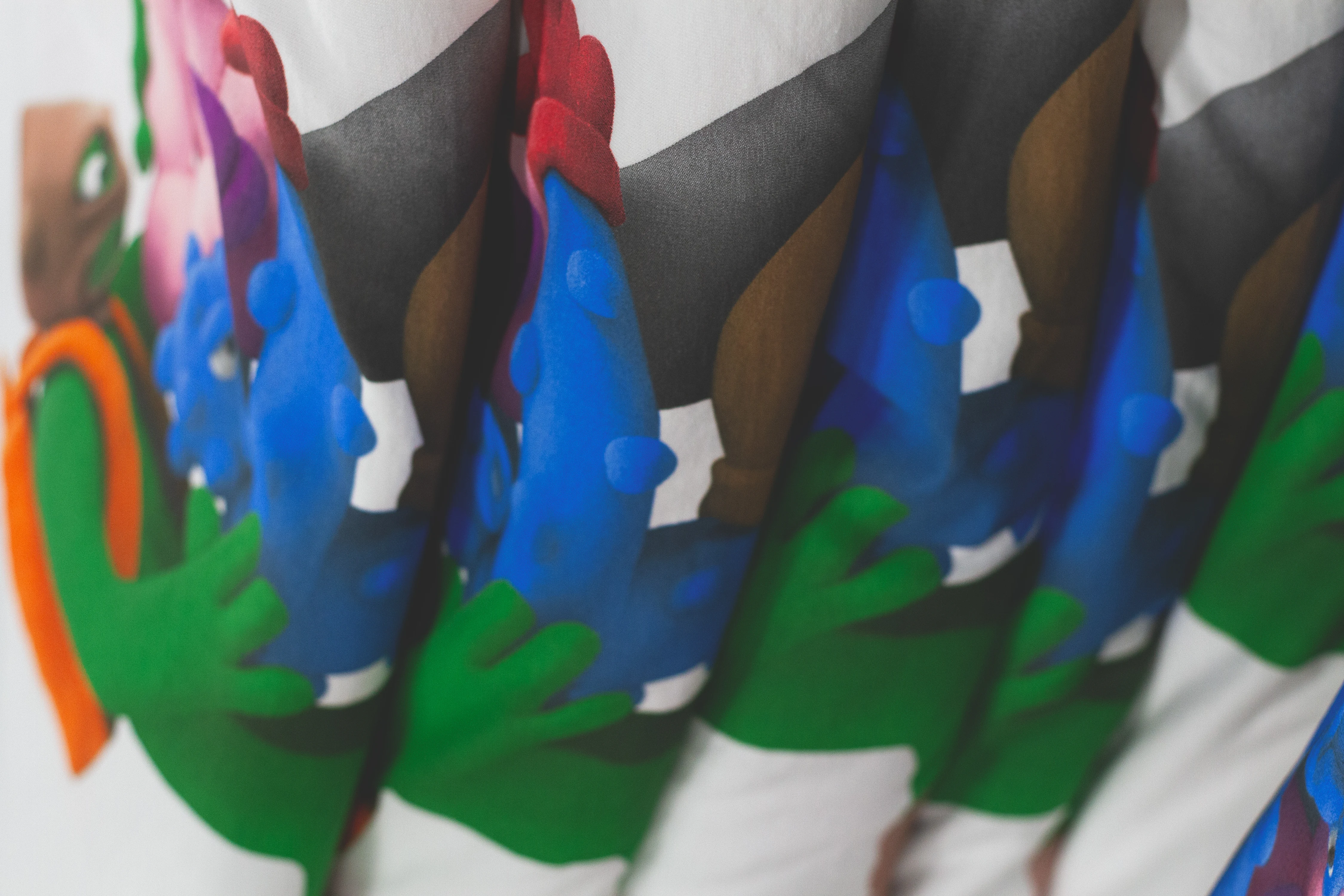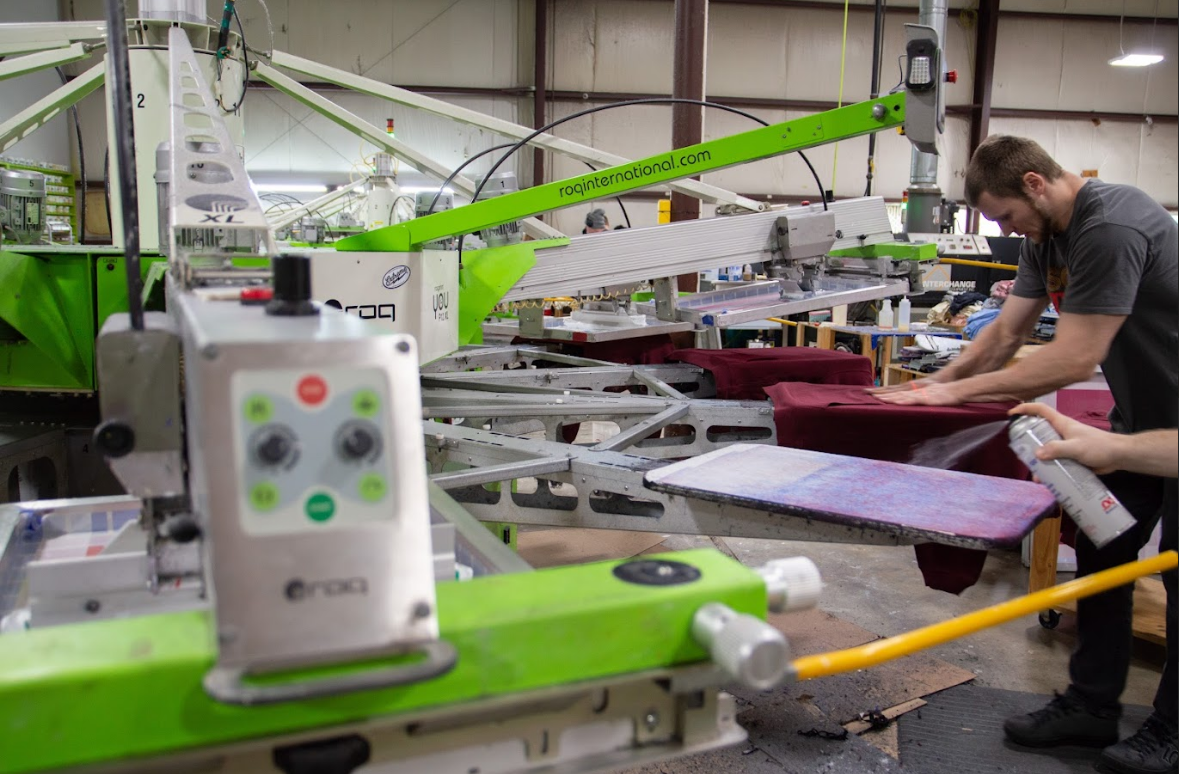

Struggling with missed deadlines, inconsistent quality, and shrinking margins? Contract screen printing offers a strategic solution for print shops seeking scalable growth. This specialized B2B service transforms production challenges into opportunities through systematic quality control, optimized workflows, and strategic partnerships that build reliable, high-volume operations.
Success in contract printing demands meticulous production protocols, strict quality control, and reliable fulfillment. Implement detailed work orders, barcode tracking, and in-process audits to ensure every print meets exact client specifications. Focus on accurate job costing, tiered pricing structures, and transparent communication to build sustained profitability and trust with contract partners.

Contract screen printing is a B2B service where print shops produce orders on behalf of other businesses that lack equipment or expertise. This arrangement demands strict adherence to client specifications, consistent quality and reliable turnaround times. Unlike direct-to-consumer work, contract printing requires precise PMS color matching within Delta E tolerances, consistent registration across production runs, and comprehensive documentation proving compliance with specifications.
Success depends on interpreting technical work orders, managing multiple job tickets simultaneously, and maintaining traceability from pre-press through final inspection. Typical order volumes range from 500 to 5,000+ pieces, requiring an understanding of wholesale production terminology and an operational tempo that differs significantly from retail printing environments.
Contract screen printing operates on wholesale economics 40-60% below retail pricing, making operational efficiency critical for profitability. Calculate comprehensive per-job costs including direct labor, consumables (screens, emulsion, ink, squeegees), substrate costs with spoilage rates (2-5%), press setup time, overhead allocation, and quality control labor.
Avoid simplified per-piece pricing that ignores setup complexity. Implement job costing software that tracks actual time and materials, then compare against the quoted rates. Target 25-35% gross margins after direct costs, with net margins of 8-15% after overhead.
Establish tiered pricing with minimum order quantities (MOQs) of 72-144 pieces to cover setup costs. Create price breaks at volume thresholds: 72-143, 144-287, 288-575, and 576+ pieces. Factor specialty processes as separate line items with transparent upcharges. Review job profitability quarterly and adjust pricing annually in response to documented cost increases.
Partner selection determines operational success in contract printing. Prioritize reliability, communication protocols, and aligned business objectives to maximize workflow efficiency and long-term scalability.
Assess potential partners by examining on-time delivery rates (target: 95%+), order accuracy metrics (target: <2% defect rate), and bulk volume capacity. Review equipment maintenance schedules—well-maintained automatics reduce downtime by 60-80% compared to reactive maintenance. ISO-certified or formally documented workflows indicate operational maturity.
Request written quality control protocols, including first-article inspections, mid-run checks, and final audits with documented AQL standards. Verify past performance via references and case studies, focusing on rush order handling, problem resolution speed, and peak season capacity. Prioritize partners with multiple automatic presses, dedicated contract teams, and robust inventory systems.
Effective communication minimizes misprints and reduces downtime. Partners should respond within 4 business hours for critical issues, clarify specifications proactively, and document color matching, proofing, and shipping schedules clearly and unambiguously.
Implement order management systems (such as Printavo or ShopWorks) or integrated CRMs to streamline updates and track milestones. Establish standard operating procedures for artwork approval workflows, including who approves color drawdowns, when physical samples are required, and revision documentation processes.
Ensure partners understand target markets, turnaround expectations, and compliance requirements (CPSIA for youth apparel, Oeko-Tex certification). Utilize performance metrics for mutual accountability, including on-time delivery rates, defect percentages, capacity utilization, and order accuracy. Conduct quarterly business reviews to assess partnership health and identify opportunities for improvement.
Evaluate potential partners' capacity to scale alongside your business growth. Review equipment capabilities, production floor space, staffing levels, and expansion plans to ensure optimal operational efficiency. Consider their ability to handle seasonal demand fluctuations without sacrificing quality or delivery times. Strong partners demonstrate proactive capacity planning and investment in additional equipment or facilities to support future growth.
Assess technological compatibility between your systems and potential partners. Evaluate order management systems, communication platforms, and production tracking capabilities. Seamless integration reduces administrative overhead and minimizes communication errors. Modern contract shops should offer digital order submission, real-time status tracking, and automated notifications to streamline collaboration and enhance efficiency.

Streamlined operational workflows and stringent quality control protocols ensure consistent, high-caliber results. Create detailed work orders capturing all specifications: artwork files (vector format, resolution requirements), garment details (style, size breakdown, color), ink specifications (PMS codes, ink type, opacity requirements), print placements (measured from garment landmarks), and special instructions (cure temp, flash requirements, sample approval process).
Implement barcode tracking for complete traceability at each production stage. Scan incoming inventory, then track garments through pre-treatment, printing, curing, and quality inspection. This creates audit trails proving operator accountability, press settings, and inspection timing.
Standardize screen exposure, registration, and ink mixing for repeatability. Document mesh counts, emulsion types, and exposure times in SOPs. Utilize registration jigs and pallet fixtures to ensure consistent placement. Maintain ink mixing records, including batch numbers, PMS formulas, and dates, to ensure exact color matching on reorders.
Conduct in-process inspections every 25-50 pieces, checking print alignment, ink coverage, and cure temperatures to ensure quality. Use wash tests on samples to verify adhesion and quality of cure. Document findings in production logs. Conduct final audits using AQL standards: AQL 2.5 for general apparel and AQL 1.0 for premium retail.
Maintain comprehensive quality records for each contract job, including photographs of setup approvals, color drawdowns, and sample prints. Create digital folders containing all production specifications, approval emails, and quality inspection reports. This documentation provides crucial protection against disputes and demonstrates compliance with client requirements. Implement a centralized document management system accessible to both production teams and account managers.
Implement statistical process control (SPC) methods to monitor production consistency and identify trends before they become quality issues. Use measurement tools to verify print placement accuracy, color density, and registration precision within specified tolerances. Establish standardized lighting conditions for color evaluation and maintain calibrated equipment for consistent measurements. Train quality inspectors on specific client requirements and industry standards to ensure consistent evaluation criteria.
Contract printing profitability depends on meticulous pricing strategies grounded in comprehensive cost analysis. Calculate actual per-job costs including labor, consumables, setup time, overhead allocation, and spoilage rates (2-5% depending on complexity).
Benchmark against industry-standard rates: Standard plastisol printing ranges from $2.50 to $4.50 per print location for orders of 144-287 pieces, with volume discounts and specialty process upcharges.
Implement tiered pricing matrices covering:
Maintain detailed job costing records to identify profit leaks. Common issues include underestimating setup time, failing to account for specialty ink costs, inadequate spoilage allowances, and not charging for rush processing. Review pricing quarterly, adjusting for changes in material costs, labor rates, and market positioning.
Clear communication forms the backbone of effective client management. Establish detailed order confirmations that capture all specifications, including artwork approvals, garment details, print placements, ink colors, quantities by size, delivery dates, and shipping methods. Require written approval before production begins—email confirmations protect both parties from scope disputes.
Implement milestone notifications: artwork received and under review, artwork approved and screens ordered, production scheduled, printing in progress, quality inspection complete, shipped with tracking.
Set realistic turnaround times:
Document all scope changes in writing, including change orders that detail new specifications, cost impacts, and revised delivery dates. Address concerns promptly and educate clients on color matching tolerances, substrate constraints, and industry-standard defect rates. When issues arise, communicate immediately with specific recovery timelines and remediation plans.
Growing contract operations require robust systems streamlining order intake, scheduling, and quality control. Invest in shop management software (Printavo, ShopWorks, InkSoft), automating proof approvals, job tracking, inventory management, and invoicing to centralize production data and reduce manual errors. These systems integrate seamlessly with wholesale screen printing workflows to enhance efficiency and accuracy across all contract operations.
Prioritize cross-training press operators and hiring experienced production managers. Develop standardized training programs covering screen preparation, registration techniques, ink mixing protocols, and quality inspection procedures. Document tribal knowledge into written SOPs to prevent production disruptions.
Track production metrics to identify bottlenecks: average setup time per job, pieces printed per hour per press, quality defect rates by operator, and on-time delivery percentages. Common bottlenecks include pre-press, press capacity, curing capacity, and quality inspection.
Upgrade to automatic presses when manual capacity creates delays. Six-color automatics can print 800-1,200 pieces per hour, whereas manual presses typically print 60-120 pieces per hour. Calculate ROI: If labor savings and increased capacity generate an additional $8,000-$12,000 monthly margin, a $75,000 automatic press pays for itself in 8-12 months.
Allocate resources for preventative maintenance: weekly press cleaning, monthly squeegee replacements, and quarterly calibration. Maintain safety stock of consumables (20-30% above monthly usage) and garment inventory for rush orders.
Establish key performance indicators (KPIs) to monitor operational efficiency and identify areas for improvement. Track key metrics, including average setup time per job, pieces printed per hour per press, first-pass yield rates, rework percentages, and on-time delivery performance. Utilize dashboards to visualize trends and establish benchmarks for ongoing improvement. Regular performance reviews help identify bottlenecks and optimize resource allocation, enabling more effective management.
Invest in comprehensive training programs covering technical skills, quality standards, and client communication protocols. Develop certification programs for operators demonstrating proficiency in specific printing techniques or equipment operation. Cross-train employees across multiple departments to create flexibility and reduce dependency on individual specialists. Implement mentorship programs that pair experienced staff with new hires to accelerate learning and maintain high-quality standards.
Avoid vague deliverable definitions, unclear intellectual property ownership, and weak indemnification clauses. Specify turnaround times, artwork approval processes, payment terms (net 30 with late fees), and liability limits. Ensure clients warrant that they own or license all artwork and include quality standards referencing AQL levels, along with dispute resolution procedures.
Implement compliant waste disposal, manage VOCs through ventilation systems and low-VOC inks, and monitor water discharge to ensure environmental compliance. Use documented processes, eco-friendly water-based inks, and regular ecological audits to maintain compliance and shop reputation.
Essential coverage includes general liability ($1M-$2M), property insurance (covering equipment, inventory, and facilities), workers' compensation (required), commercial auto insurance (for delivery vehicles), and equipment breakdown insurance. Add business interruption coverage for equipment failures and errors and omissions insurance for production mistakes.
Leading options include water-based inks (low VOCs and biodegradable), discharge inks (for soft prints), and soy-based inks (derived from renewable resources). Prioritize phthalate-free plastisols, low-VOC formulas meeting CPSIA standards, and biodegradable pigments.
Register artwork with the U.S. Copyright Office ($65 online), watermark digital files, maintain detailed creation records, and use NDAs. Include copyright transfer clauses specifying exclusive rights or limited licensing in contracts.
Contract screen printing provides the path to scalable growth for print shops seeking to become trusted industry partners. Focus on thorough vendor evaluation, workflow optimization, and rigorous quality control to achieve consistent and repeatable results. Transparent pricing and clear client communication establish trust and drive long-term profitability.
Invest in automation, staff training, and robust systems to enable higher volumes without compromising quality. Stay agile and continuously refine processes to stand out as reliable, high-volume print partners.
Extreme Screen Prints offers industry-leading expertise, transparent service, and unmatched quality. Whether streamlining production or scaling operations, our team supports your growth journey. Call 616-202-1133 to speak with an expert or schedule your consultation to discover how we can help your contract printing operations.
Don't let growth opportunities pass by. Take the next step toward higher efficiency and exceptional client satisfaction. Reach out today to become the dependable, high-volume partner clients can count on.